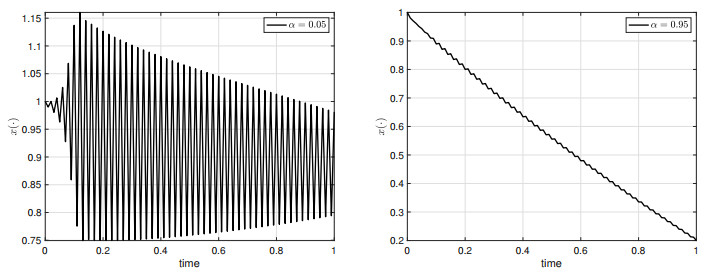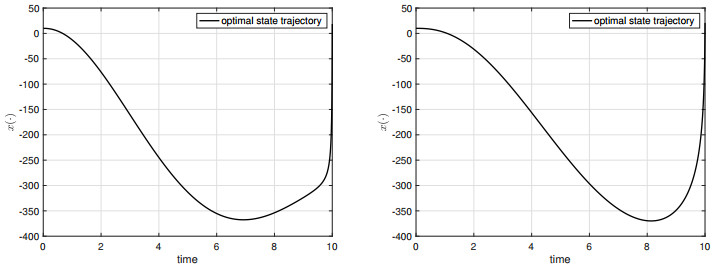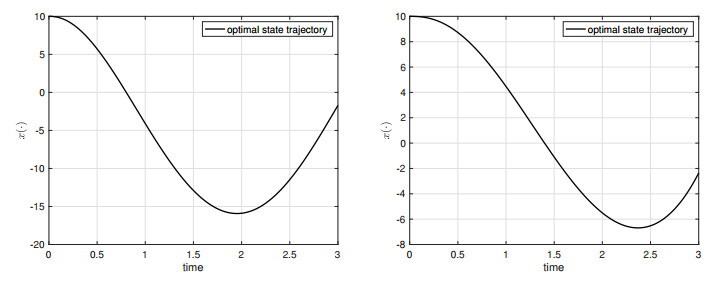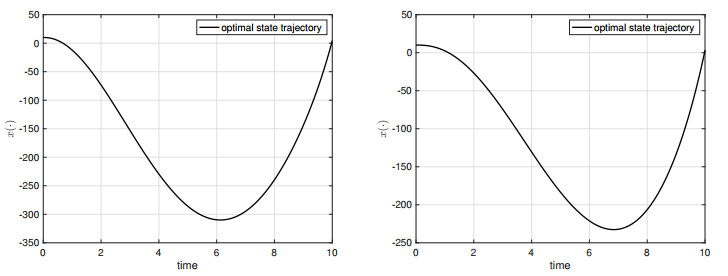1.
Introduction
In 1873, Clifford-Klein space forms made their way into mathematics history with a talk given by W. K. Clifford at the British Association for the Advancement of Sciences meeting in Bradford in September 1873 and a paper he published in June of the same year. Clifford's talk was titled on a surface of zero curvature and finite extension, and this is the only information that is available in the meeting proceedings. However, we have further information about it because to F. Klein, who attended Clifford's discussion and provided various versions of it [11]. In the context of elliptic geometry—which Clifford conceived in Klein's way as the geometry of the part of projective space limited by a purely imaginary quartic—Clifford described a closed surface which is locally flat, the today so-called Clifford surface (this name was introduced by Klein [11]). This surface is constructed by using Clifford parallels; Bianchi later provided a description by moving a circle along an elliptic straight line in such a way that it is always orthogonal to the straight line. So Clifford's surface is the analogue of a cylinder; but since it closed - it is often called a torus.
Let (M,g) be a compact minimal hypersurface of the unit sphere Sn+1 with the immersion ψ:M→Sn+1. Then we have the immersion ¯ψ=ι∘ψ:M→Rn+2 in the Euclidean space Rn+2, where ı:Sn+1→Rn+2 is the inclusion map. The problem of finding sufficient conditions for the hypersurface M of the unit sphere Sn+1 to be the Clifford hypersurface Sℓ(√ℓn)×Sm(√mn), where ℓ,m∈Z+,ℓ+m=n or the unit sphere Sn is one of an by the interesting questions in the differential geometry and specifically in the geometry of the hypersurfaces in a sphere. Many authors including the author of the article with others studied this problem in various ways (cf. [1,4,5,6,7,8]). For notation and background information, the interested reader is referred to [2,3].
We denote by A=AN and A¯N=−I the shape operators of the immersion ψ and ¯ψ corresponding to the unit normal vector field N∈X(Sn+1) and ¯N∈X(Rn+2), respectively, where X(Sn+1) and X(Rn+2) are the Lie algebras of smooth vector field on Sn+1 and Rn+2, respectively.
Note that we can express the immersion ¯ψ as
where v is the vector field tangential to Sn+1, u is the vector field tangential to M, ρ=<¯ψ,N>, f=<¯ψ,¯N> and <,> is the Euclidean metric.
In [7], we obtained the Wang-type inequality [12] for compact minimal hypersurfaces in the unit sphere S2n+1 with Sasakian structure and used those inequalities to characterize minimal Clifford hypersurfaces in the unit sphere. Indeed, we obtained two different characterisations (see [7, Theorems 1 and 2]).
In this paper, our main aim is to obtain the classification by imposing conditions over the tangent and normal components of the immersion. Precisely, we will prove that if ρ2(1−β)+φ2(α−1α)≥0 and Z(φ)={x∈M:φ(x)=0} is a discrete set where α and β are two constants satisfies (n−1)α≤Ric≤β,β≤1, then M isometric to the Clifford hypersurface Sℓ(√ℓn)×Sm(√mn), where ℓ,m∈Z+,ℓ+m=n (cf. Theorem 3.1). Also, in this paper, we will show that if M has constant scalar curvature S with u is a nonzero vector field and ▽ρ=λ▽f, λ∈R∗, then M isometric to the Clifford hypersurface Sℓ(√ℓn)×Sm(√mn), where ℓ,m∈Z+,ℓ+m=n (cf. Theorem 5.2). Also, we will study the cases:
(i) when v is a nonzero vector field normal to M or tangent to M,
(ii) if u is a nonzero conformal vector field,
(iii) the case if v is a nonzero vector field with ρ is a constant or f is a constant.
2.
Preliminaries
Let (M,g) be a compact minimal hypersurface of the unit sphere Sn+1, n∈Z+ with the immersion ψ:M→Sn+1 and let ¯ψ=ι∘ψ:M→Rn+2. We shall denoted by g the induced metric on the hypersurface M as well as the induced metric on Sn+1. Also, we denote by ▽, ¯N and D the Riemannian connections on M, Sn+1 and Rn+2, respectively. Let N∈X(Sn+1) and ¯N∈X(Rn+2) be the unit normal vector fields on Sn+1 and Rn+2, respectively and let AN and A¯N=−I be the shape operators of the immersions ψ and ¯ψ, respectively.
The curvature tensor field of the hypersurface M is given by the Gauss formula:
for all X,Y,Z∈X(M).
The global tensor field for orthonormal frame of vector field {e1,…,en} on Mn is defined as
for all X,Y∈χ(M), the above tensor is called the Ricci tensor.
From (2.1) and (2.2) we can derive the expression for Ricci tensor as follows:
If we fix a distinct vector eu from {e1,…,en} on M, suppose which is u. Then, the Ricci curvature Ric is defined by
and the scalar curvature S of M is given by
where ‖A‖ is the length of the shape operator A.
The Ricci operator Q is the symmetric tensor field defined by
where {e1,...,en} is a local orthonormal frame and it is well known that the Ricci operator Q satisfies g(QX,Y)=Ric(X,Y) for all X,Y∈X(M). Also, it is known that
where the covariant derivative (▽Q)(X,Y)=▽XQY−Q(▽XY) and ▽S is the gradient of the scalar curvature S.
The Codazzi equation of the hypersurface is
for all X,Y∈X(M), where the covariant derivative (▽A)(X,Y)=▽XAY−A(▽XY). A smooth vector field ζ is called conformal vector field if its flow consists of conformal transformations or equivalently,
where Łζg is the Lie derivative of g with respect to ζ.
For a smooth function k, we denote by ▽k the gradient of k and we define the Hessian operator Ak:X(M)→X(M) by AkX=▽X▽k. Also, we denote by △ the Laplace operator acting on C∞(M) the set of all smooth functions on M. It is well known that the sufficient and necessary condition for a connected and complete n -dimensional Riemannian manifold (M,g) to be isometric to the sphere Sn(c), is there is a non-constant smooth function k∈C∞(M) satisfying Ak=−ckI, which is called Obata's equation.
Now, we will introduce some lemmas that we will use to prove the results of this paper:
Lemma 2.1. (Bochner's Formula) [9] Let (M,g) be a compact Riemannian manifold and h∈C∞(M). Then,
Lemma 2.2. [9] Let (M,g) be a Riemannian manifold and h∈C∞(M). Then
where {e1,...,en} is a local orthonormal frame and (▽Ah)(X,Y)=▽XAh(Y)−Ah(▽XY),X,Y∈X(M).
Lemma 2.3. Let (M,g) be a compact minimal hypersurface of the unit sphere Sn+1, n∈Z+ with the immersion ψ:M→Sn+1 and let ¯ψ=ι∘ψ:M→Rn+2. Then
(i) ▽Xu=(1−f)X+ρAX for any X∈X(M), ▽ρ=−Au and ▽f=u.
(ii) △ρ=−ρ‖A‖2 and △f=n(1−f).
(iii) ∫{ρtrA3+(n2−1)(1−f)}=0 and ∫ρ2‖A‖2=∫‖Au‖2.
(iv) Let φ=1−f. Then ▽φ=−u, △φ=−nφ and ∫‖u‖2=n∫φ2, where v is the vector field tangential to Sn+1, u is the vector field tangential to M, ρ=<¯ψ,N>, f=<¯ψ,¯N> and <,> is the Euclidean metric on Rn+2.
Proof. (i) Note that as ¯ψ=u+ρN+f¯N, for any X∈X(M):
by equating tangential and normal component, we get
and
(ii) As M is a minimal hypersurface of Sn+1,
and
(iii)
So, if M is a compact, we get
Also, note that
So, since M is a compact, we get
(iv) Let φ=1−f. Then,
Also,
Also, note that
Since M is a compact, we get
□
Note that as △f=n(1−f), f is a constant if and only if f=1. In Section 3, we study the case when Z(φ)={x∈M:φ(x)=0} is a discrete set and ρ2(1−β)+φ2(α−1)≥0, where α and β are two constants satisfying (n−1)α≤Ric≤(n−1)β, β<1. In Section 4, we study the cases v is a nonzero vector field with f or ρ is a constant, the cases v is a nonzero vector field tangent or normal to the minimal hypersurface M and the case if u is a nonzero conformal vector field. In Section 5, we study the case under the restriction Au=λu, λ∈R.
3.
Minimal hypersurface with Z(φ) is a discrete set
Note that on using Lemma 2.3(iii), we get
Combining Lemma 2.3(iv) with Eq (2.2), we conclude
Let α and β be two constants satisfying (they exist owing to compactness of M) (n−1)α≤Ric≤(n−1)β,β<1. Then, using above equation, we get
Assume that ρ2(1−β)+φ2(α−1)≥0, which in view of the above inequality implies
Assume that Z(φ) is a discrete set, then on using (ρφ)2=1−α1−β on M−Z(φ). As ρ and φ are continuous functions and Z(φ) is a discrete set we get (ρφ)2=1−α1−β on M. So ρ=κφ, κ=√1−α1−β is a constant. Thus, by Lemma 2.3(i), we have
and hence
thus either κ=0 or φ(‖A‖2−n)=0. If κ=0, then α=1 and therefore M isometric to the unit sphere Sn and it will imply β=1, which is a contradiction with our assumption β≠1. So φ(‖A‖2−n)=0, but as φ≠0 on M−Z(φ) and Z(φ) is a discrete set we get ‖A‖2=n on all M, by continuity of the function ‖A‖2, and therefore M isometric to the Clifford hypersurface Sℓ(√ℓn)×Sm(√mn), where ℓ,m∈Z+,ℓ+m=n. Thus, we have proved the following theorem:
Theorem 3.1. Let M be a compact connected minimal hypersurface of Sn+1 and α and β be two constants such that (n−1)α≤Ric≤(n−1)β,β<1. If ρ2(1−β)+φ2(α−1)≥0 and Z(φ)={x∈M:φ(x)=0} is discrete, then M isometric to the Clifford hypersurface Sℓ(√ℓn)×Sm(√mn), where ℓ,m∈Z+,ℓ+m=n.
4.
Minimal hypersurface with v is a nonzero vector field
In this section, we study the cases v is a nonzero vector field that is either tangent or normal to the minimal hypersurface M. Also, we will study the cases v is a nonzero vector field with f or ρ is a constant, and the case if u is a nonzero conformal vector field.
Theorem 4.1. Let M be a complete minimal simply connected hypersurface of Sn+1.
(i) If v is a nonzero vector field tangent to M, then M isometric to the unit sphere Sn.
(ii) If v is a nonzero vector field normal to M, then M isometric to the unit sphere Sn.
Proof. (i) As ρ=0, using Lemma 2.3(i) and (iv), we get
for any X∈X(M). So AφX=−φX for any XinX(M). If φ is a constant then u=0 and v=0, which is a contradiction. So φ is nonconstant function satisfies the Obata's equation and therefore M isometric to the unit sphere Sn.
(ii) Note that as u=0 and divu=n(1−f) (Lemma 3.2(ii)), we get f=1, so by Lemma 3.1(i), we have ρAX=0 for all X∈X(M), but ρ≠0 since v is nonzero vector field. So AX=0 for all X∈X(M) and therefore M isometric to the unit sphere Sn. □
Theorem 4.2. Let M be a complete minimal simply connected hypersurface of Sn+1.
(i) If v is a nonzero vector field and ρ is a constant, then M isometric to the unit sphere Sn.
(ii) If v is a nonzero vector field and f is a constant, then M isometric to the unit sphere Sn.
Proof. (i) If ρ≠0, then by using Lemma 2.3(ii), we get ρ‖A‖2=0 and therefore M isometric to the unit sphere Sn. If ρ=0, then by using Lemma 2.3(i) and (iv) we get ▽Xu=−φX for any X∈X(M). So AφX=−φX for any X∈X(M). If φ is a constant then u=0 and v=0, which is a contradiction. So φ is nonconstant function satisfies the Obata's equation and therefore M isometric to the unit sphere Sn.
(ii) If f is a constant, then u=▽f=0, so ▽ρ=−Au=0, so ρ is a constant and hence ρ‖A‖2=0, so either ρ=0 or M isometric to the unit sphere Sn. Assume, ρ=0 then u=▽f=0 and thus v=0, which is a contradiction. So M isometric to the unit sphere Sn. □
Theorem 4.3. Let M be a complete minimal simply connected hypersurface of Sn+1. If u is a nonzero conformal vector field, then M isometric to the unit sphere Sn.
Proof. Assume u is a conformal vector field with potential map σ then for any X,Y∈X(M):
So ρAX=(σ+f−1)X for any X∈X(M).
If ρ=0, then M isometric to the unit sphere Sn (by Theorem 4.2(i)).
If ρ≠0, then A=FI, F=κ+f−1ρ, that is M is a totally umplical hypersurface of Sn+1 but M is minimal hypersurface of Sn+1 so M isometric to the unit sphere Sn. □
5.
Minimal hypersurface with Au=λu,λ∈R
Theorem 5.1. Let M be a complete minimal simply connected hypersurface of Sn+1. If Au=λu, λ∈R and △ρ≠0, then
Proof. We know that
Also,
By using Lemma 2.3(iii), we get
Using the Bochner's Formula (Lemma 2.1) for the smooth function ρ:
This implies
Now, using the Bochner's Formula (Lemma 2.1) for the smooth function f:
Now as △ρ≠0, ρ△ρ≠0 and hence ρ2‖A‖2≠0 and therefore
□
Theorem 5.2. Let M be a complete minimal simply connected hypersurface of Sn+1 with constant scalar curvature S. If u is a nonzero vector field, Au=λu, λ∈R∗, then M isometric to the Clifford hypersurface Sℓ(√ℓn)×Sm(√mn), where ℓ,m∈Z+,ℓ+m=n.
Proof. We notice that
Also for any X∈χ(M), we have
Thus
and
Using Lemma 2.2, we get
But ‖A‖2 is a constant, since the scalar curvature S is a constant (see Eq (2.2)). Thus
and so
since λ≠0 and u is a nonzero vector field, ‖A‖2=n and therefore M isometric to the Clifford hypersurface Sℓ(√ℓn)×Sm(√mn), where ℓ,m∈Z+,ℓ+m=n. □
Remark 5.1. Note that the structure of [10] can be viewed as an example of the current article's structure in specific cases. In other words, the structure used for the article [10] can be recovered specifically if we select l=1,m=2 and n=3. Because of this, the structure used in this article is the generalized case of [10].
Conflict of interest
The authors declare no conflict of interest.


















 DownLoad:
DownLoad: